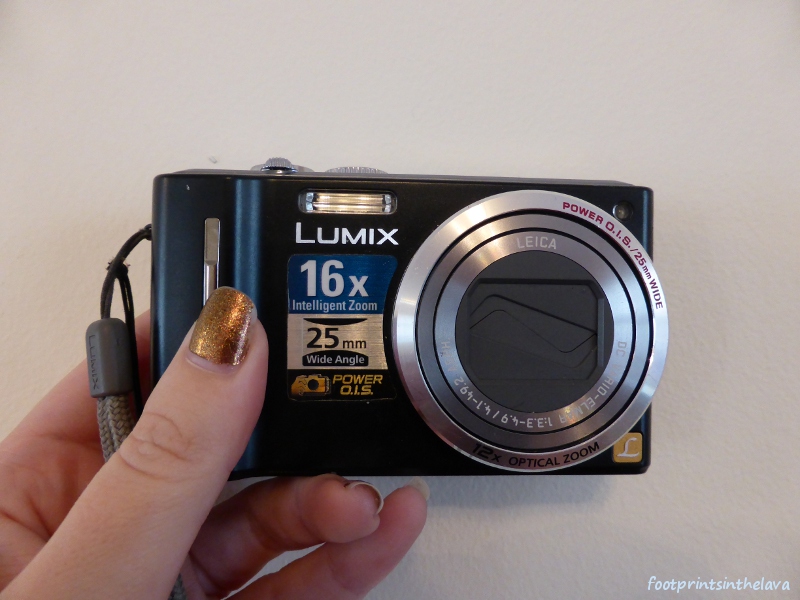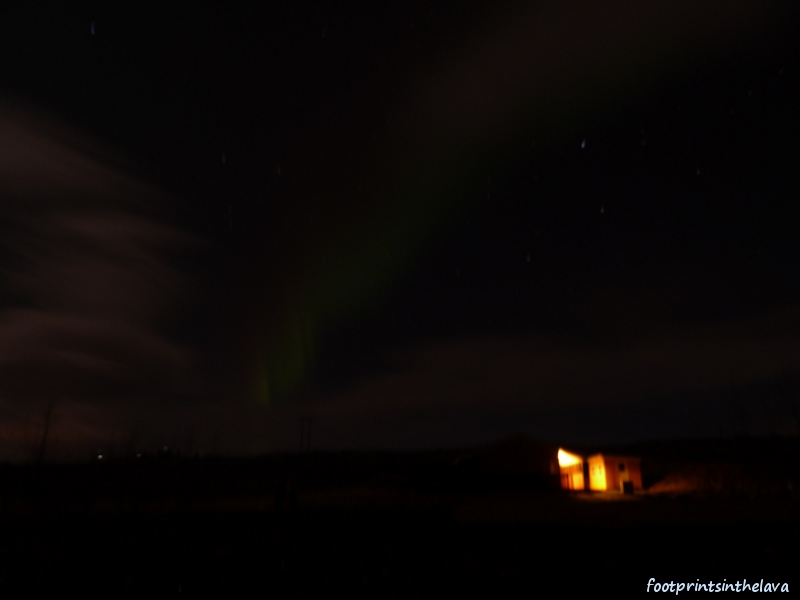Do you want to take photos of the Northern Lights? Do you not know one end of a camera from the other? I am not a photographer. I make no claim to be. If you are one, or you are learning to be one, or you own one of the massive, expensive, complicated cameras that a real photographer does, then this is not for you.
If, however, you are a tourist with a point-and-click camera, then let me see if I can help you.
1) You will need some Northern Lights
This is the most difficult part of the whole procedure. The Northern Lights are notoriously unpredictable. I’ve always been told that ideal conditions are “cold, clear & crisp”. In my voyages to the cold dark places of northern Europe, I’ve been out hunting for the Northern Lights four or five times and seen them twice. That’s not a bad success rate at all but the first time I saw them, they were so faint and I was so disappointed by them that I almost didn’t go out looking ever again. Believe me, when the Lights are out, they’re really out. On a cloudy night you’ll see nothing. If the moon is full, chances are it’ll drown out the Lights. You need to be somewhere dark, well away from any street lights. If conditions are perfect and the Lights aren’t in the mood, you’ll see nothing. Very unpredictable. Finding the Lights is 10% perseverance, 90% dumb luck.
2) You will need a camera
This may sound obvious but I’ve seen many people trying to take photos of the Northern Lights on phones or iPads. Don’t. It’s a waste of time and battery power. You need a real camera. It doesn’t need to be a complicated or expensive one. This is mine*:
It’s a wee little point-and-click thing, perfect for my purposes, a Panasonic Lumix DMC-TZ8. Technically, it’s not the one I’m currently using. It developed a smudge on the sensor which made every photo look like it has a massive dirty thumbprint on it. It can be fixed but apparently it would cost more than a new camera, so guess what I did. But my new one is pretty much the same, it’s a Panasonic Lumix DMC-TZ40. The only major difference I can see is that where I used to have an on switch, I now have an on button.
If you don’t have a camera, you have 4 options
1) Get one
2) Befriend someone who does and get them to lend it to you
3) Befriend someone who’s taking photos of the Lights and ask them to send you their photos
4) Spend your time enjoying the experience of seeing the Lights rather than getting cold and frustrated trying to take photos of them
3) Do not use the flash
I cannot emphasise this enough. Switch your flash off! If your flash goes off while I’m trying to take photos of these precious lights, I will want to slap you . The point of the flash is to reflect off an object so it shows up in a photo. That isn’t relevant to taking photos of lights – it doesn’t work on taking photos of lights and even if it did, these particular Lights are far too far away for the flash to affect them. All you’re going to achieve is injuring people’s night vision and whiting out their photos and angering them.
4) Use your settings
Most modern point-and-click cameras have a variety of pre-set modes to make it easier for people like me to pick the right settings. The Lumixes have a starry sky mode under Scenes.
 I don’t know about other cameras but I imagine most of them will have something similar. This particular one gives you a choice of long exposures, probably has some setting to allow in lots of light and has no flash. I opt for 30 seconds minimum, usually one minute. The camera opens the shutter for that long – so make sure no one walks in front of the camera or uses the flash in front of it – and then it spends that long again processing it. I don’t understand but I go along with it. This means taking photos of the Northern Lights is an incredibly tedious, time-consuming job which is why I get so furious if anyone tries to ruin my precious photos with their damn flash. One minute to take, one minute to process, time to get it settled in place and turn on the self-timer – you’re looking at an absolute minimum of three minutes per photo which means you only get six or ten photos for standing outside in the bitter cold for half an hour.
I don’t know about other cameras but I imagine most of them will have something similar. This particular one gives you a choice of long exposures, probably has some setting to allow in lots of light and has no flash. I opt for 30 seconds minimum, usually one minute. The camera opens the shutter for that long – so make sure no one walks in front of the camera or uses the flash in front of it – and then it spends that long again processing it. I don’t understand but I go along with it. This means taking photos of the Northern Lights is an incredibly tedious, time-consuming job which is why I get so furious if anyone tries to ruin my precious photos with their damn flash. One minute to take, one minute to process, time to get it settled in place and turn on the self-timer – you’re looking at an absolute minimum of three minutes per photo which means you only get six or ten photos for standing outside in the bitter cold for half an hour.
5) Get rid of camera shake
A setting like this will notice the faintest vibration. You can’t hold your camera while taking long exposure photos. Even if you can hold your breath that long without quaking from need for oxygen, your heartbeat will make your photos blurry. You think your hands are totally steady – they’re not. When I’m taking photos of the Northern Lights, it’s usually snowy so I put the camera on the ground and nestle it into the snow so it’s supported and pointing at the lights. I then stand behind it and yell at anyone who tries to walk across it. Mine has an always-on wrap-around neoprene case which often unbalances it but it protects it from snow when I stick it in the ground (and from impact if I ever drop it. I recommend). At a campsite, I was once lucky enough to find little grassy walls surrounding barbecue areas which were perfect for lying on and raising the camera above tourist-foot level. Maybe you have one of those Gorillapod things – use it to attach the camera to something solid like a post. If you have a proper tripod, I assume you’re a professional and therefore aren’t reading this.
Pressing the shutter button will also shake the camera. I get round this by using the self-timer button which means the camera isn’t moving at all by the time it starts taking the photos.
6) That’s about it
Obviously, these are not as good as the photos professionals will take. But for a point-and-click tourist, it’ll make the difference between having photos of the Northern Lights and having photos of a black sky. You can then do what you like with them in Photoshop. The last of these four photos has been played with, badly, by someone who doesn’t know a thing about photo editing, but the first three are exactly as they came off the camera.
*the nail varnish, by the way, for those who care, is Barry M’s Copper
If this post was useful, or interesting, or entertaining – if you got anything of value from this post at all, please consider dropping a few pennies in my virtual tip jar. Bloggers don’t get paid and plane tickets are expensive.




